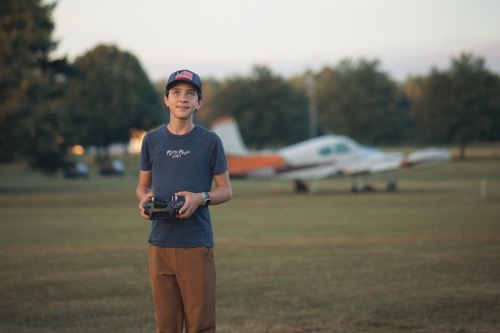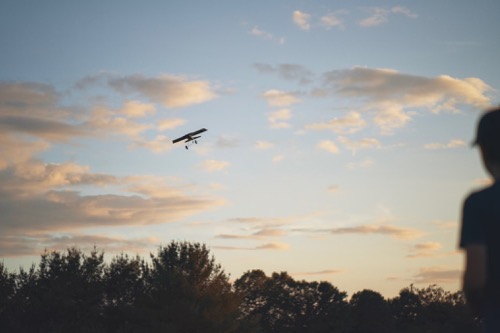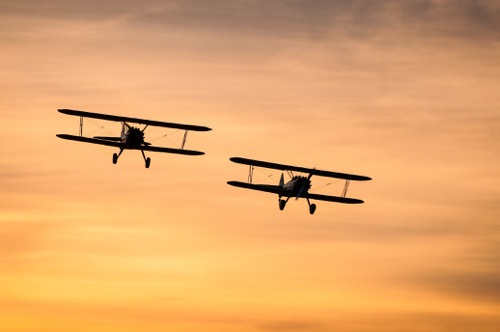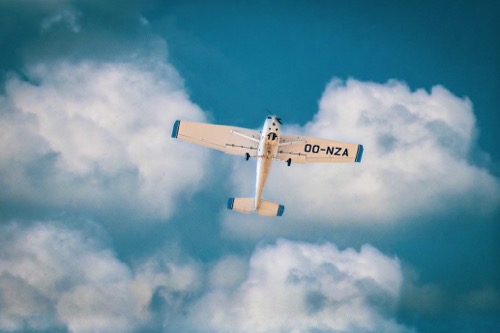Getting started in the exciting world of RC planes is easier than ever thanks to modern technology and beginner-friendly models. Flying your own radio-controlled aircraft is an incredibly fun and rewarding hobby. But with so many options out there, choosing the right RC plane for your first steps into piloting can feel overwhelming.
In this beginner’s guide, we’ll cover everything you need to know about picking the best starter RC plane for learning the basics and progressing safely in the hobby. You’ll learn about the different types of beginner planes, which features to look for, ideal sizes, ready-to-fly vs. kits, where to fly, mistakes to avoid, and tips from experienced RC pilots. With the right information, you’ll be able to select an ideal first model and get set up for success taking your skills from novice to intermediate. Strap in and get ready to discover the thrill of piloting your own aircraft with this comprehensive introduction to RC planes for beginners!

What are the different types of RC planes for beginners?
When starting out in RC planes, it’s important to choose a model that is easy to fly and forgiving to pilot errors. The main types of RC planes suitable for beginners include trainer planes, park flyers, slope soarers, and micro planes.
Trainer planes are designed specifically for new RC pilots. They have stable flight characteristics, high wings, and gentle responses to control inputs. Trainers allow beginners to learn without bad habits and have more margin for error. Popular trainers for novices include the HobbyZone Champ and Hangar 9 Easy Fly series.
Park flyer planes are small, lightweight models meant for flying in open spaces. They are more agile than trainers but still relatively easy to control. Park flyers like the E-flite UMX series allow beginners to advance and have fun as their skills improve.
Slope soarers utilize updrafts and ridges to stay aloft. They excel at gliding and have relaxed flying qualities. Slope soarers like the Radian Pro are a gentle intro into rudder/elevator controls before transitioning to ailerons.
Micro planes are very small RC models often flown indoors. Their slow speeds and miniature size make them ideal to learn the basics of flight without much risk. Good indoor choices include the Tiny Trainer or Vapor Lite Pro from E-flite.
What features should you look for in a beginner RC plane?
When choosing an RC plane for a beginner, there are some key features to look for that will make learning easier. The plane should have stable and forgiving flight characteristics, which typically comes from having a high-wing design and adequate dihedral. The controls should not be overly sensitive, so the plane isn’t twitchy or prone to stalling. Slow flying speed and a flat bottom wing are also ideal for new pilots.
Durability is also an important factor for a beginner’s first plane. The aircraft should be able to withstand minor crashes and bumps as part of the learning process. Robust foam construction absorbs impact much better than delicate balsa builds. Repairability is also useful, allowing beginners to fix minor damage and get back in the air quickly.
Other helpful features include safe power systems such as electric motors versus combustible fuel, rounded wing edges to decrease tip stalls, and removable wings/stabilizers for transport. Basic aerobatic capabilities will allow new pilots to advance their skills over time. Lastly, RTF (ready-to-fly) planes require less work than kits for true beginners.

What is the best size/wingspan for a starter RC plane?
When starting out in RC flying, the size and wingspan of the plane is an important consideration. A larger wingspan generally provides more stability and makes controlling the airplane easier. However, very large planes can be unwieldy and fly too fast for beginners. Conversely, very small micro-sized models are challenging to see and control outdoors.
For most new pilots, a wingspan in the range of 32 to 48 inches provides a good balance. This allows for adequate visibility and relatively slow flying speeds under 20 mph. At this size, the planes are large enough to handle stronger winds but still small enough for newbies to maneuver with basic RC equipment.
Aircraft in the park flyer or trainer category, like the HobbyZone Champ or E-flite UMX Radian, are ideal starter sizes. Their wider wingspans increase stability while producing plenty of lift from slower speeds suitable for novices. The moderate momentum also gives beginners more time to think and react while learning.
Moving up in wingspan after gaining experience will allow flying in higher winds and expanding into more advanced RC planes. But keeping the wingspan reasonable as a starter ensures that piloting basics are mastered first before moving onto bigger, faster models requiring quicker reactions.
Should you start with a ready-to-fly (RTF) plane or a kit?

When starting out in RC planes, choosing between a ready-to-fly (RTF) model or a kit depends on your goals and experience level. For brand new beginners, RTF planes provide the easiest introduction. These come fully assembled with all electronics and hardware installed. Just add your own receiver/transmitter, battery pack, and you’re ready for flying.
RTFs allow newbies to skip potentially challenging steps like construction, equipment pairing and setup. Popular trainers like the HobbyZone Champ offer a true out-of-the-box solution to get novices airborne quickly. RTFs also hold resale value well if one decides RC flying isn’t for them.
For those comfortable with basic building and electronics, a kit may offer more fulfillment. Kits provide the satisfaction of completing a plane through one’s own work. They also allow customizing with preferred components and designs. However, kits do require researching compatible parts, accurate assembly, mounting equipment properly and troubleshooting.
Ultimately RTF planes present the fastest, easiest way to start flying immediately. But partial or full kits let pilots tailor and understand their aircraft more intimately. One’s experience level, desired involvement, and available time/patience should guide the choice between convenience or fulfillment.
List of the best RC planes for learning to fly
Where is the best place to fly your first RC plane?
Choosing the right location to fly your first RC plane is key to having a safe and successful experience. Wide open spaces like fields or parks are ideal so you can take off and land with plenty of room without obstacles. The area should be free of trees, power lines, buildings, and other structures that could damage the plane during mistakes common for beginners.
Calm winds are best for beginner flights rather than gusty conditions. It’s also wise to pick a site with soft grass rather than hard surfaces so minor crashes will be gentle. An even flat terrain is preferable to hilly areas. Locations near other experienced RC flyers can also provide guidance and advice to new pilots.
Many hobby shops have training areas or sponsored flying fields perfect for beginners learning. Additionally, sites like AMA clubs, public parks, football fields, and golf courses offer suitable open spaces if regular model aircraft areas are not accessible.
Scouting potential spots during low traffic times and checking for any restrictions or regulations is prudent. Choose a location with good visibility and separation from crowds to minimize distractions while learning. Finding the right place to start flying is essential for new RC pilots to safely practice without pressure or hazards.

What are some beginner RC plane flying tips?
Flying an RC plane for the first time can be challenging but also exhilarating. Following some basic beginner tips will help ensure your early flights go smoothly and safely. When starting out, choose calm weather days with light winds. This will make controlling the aircraft much easier. Master orienting yourself to the plane’s direction and maintaining proper throttle management. Take off gently, flying low and slow in the beginning. Keep some power on to avoid stalling as you practice basic maneuvers.
Make gentle, small corrections with the controls rather than aggressive movements. Fly at conservative heights until you’re comfortable with ascending and descending more aggressively. Have an experienced pilot with you to take over if you get disoriented or lose control. Stay clear of buildings, trees and other dangers as you learn. Don’t try advanced aerobatics or risky moves too quickly. Have patience as you build muscle memory and reactions.
Finally, pick safe landing zones free of obstructions.Fly past the landing spot before circling back to approach into the wind. Reduce throttle steadily and pull up slightly to bleed speed. Hold off the ground as long as possible before touching down softly. Apply up elevator after landing to keep the plane on its wheels. Following these tips will get beginners off to a great start in RC flying.
What mistakes should beginners avoid with RC planes?
As a new RC pilot, there are some common mistakes you’ll want to be aware of and avoid with your first plane. Trying to fly in high winds can make controlling the aircraft very difficult for a beginner. Likewise, choosing a model that is too advanced or fast is not ideal when learning. Insufficient pre-flight checks or rushing the maiden flight often ends poorly.
In the air, some key errors to steer clear of include losing orientation of which way the plane is facing, overcontrolling inputs, and stalling from flying too slowly. Sudden climb attempts and premature aerobatic maneuvers are also unwise. Neglecting to maintain some throttle at all times will lead to crashes.
Other pitfalls include flying behind yourself or losing sight of the plane temporarily. Choosing unsafe landing areas or running out of battery can present problems. Finally, failing to take the time needed to master basic flight skills before advancing is a common downfall.
By being aware of these potential mistakes in advance, beginners can avoid ingraining bad habits. Consider starting with a flight simulator to practice orientation, procedures, and control familiarity before your first real flight. Taking it slowly and laying a patient foundation of skills will pay off in the long run.
Enjoyed this guide of what RC plane is best for beginners ? Then be sure to check out our other RC Rating guides.




